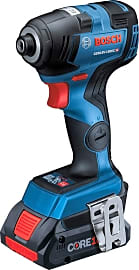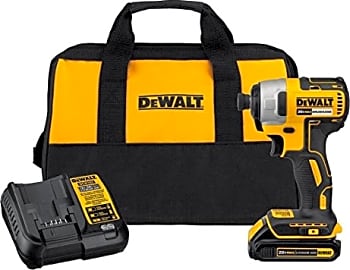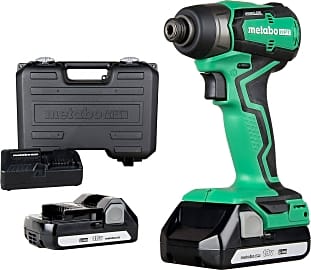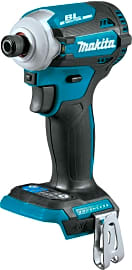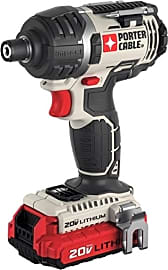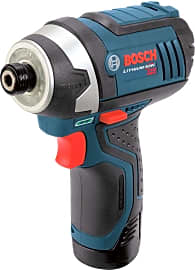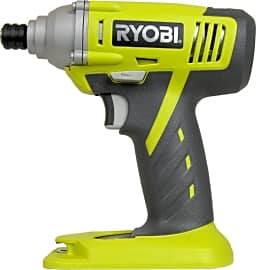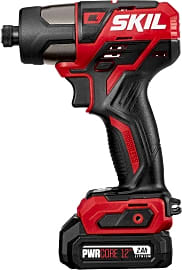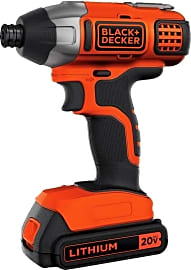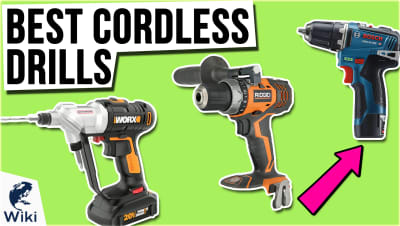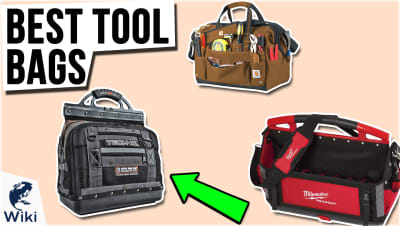The 10 Best Impact Drivers

This wiki has been updated 43 times since it was first published in April of 2015. Whether you're a construction professional or a DIYer who builds and fixes things around the house, get yourself one of these impact drivers to fasten bolts, nuts, and screws efficiently. Used with the proper safety precautions, of course, they are ideal for situations demanding a more precise balance of torque and power than an ordinary screwdriver is capable of providing. When users buy our independently chosen editorial recommendations, we may earn commissions to help fund the Wiki.
Editor's Notes
February 16, 2021:
We replaced the Bosch IDH18201 with the Bosch GDR18V-1800CB25 — a nice 18-volt kit that delivers 4,000 impacts per minute and comes with two, four-amp-hour batteries. We also moved our choice from the company’s 12-volt line – the Bosch PS41-2A – a little further down our list, but ultimately decided to retain it because, although its lack of power makes it suitable for limited applications, we still feel it remains a great choice for medium-duty work — like punching stubby sheet-metal screws into ductwork.
Similarly, we replaced the Milwaukee 2656-20 , which was sold as a bare tool, with a complete kit from the company — the Milwaukee 2853-22. This set comes with a pair of five-amp-hour batteries from the company’s M18 line. I don’t work with them regularly, but I have had the opportunity to try them, and can attest that they’re a diehard choice.
Lastly, we eliminated the Ridgid R86034, which was offered as a refurbished tool. I like Ridgid’s gear, but I’m always hesitant to recommend refurbished equipment in a tool category, as I know that most owners prefer to be the first and last person beating on their equipment. Ridgid is also quick to brag about its excellent lifetime warranty, but not as fast to mention that it only applies when its tools are purchased from particular vendors. This being the case, we thought it better to rank the Metabo HPT WH18DDX instead — an extremely lightweight model that comes with a pair of 1.5-amp-hour batteries and a lifetime tool warranty.
Impact drivers are great, and just about any professional in construction industry can benefit from having one around, but depending on the specific utility you’re hoping to get out of this tool, you might also be interested in checking out our list of Best Brushless Drills.
July 12, 2019:
When considering one of these tools, it's important to understand the difference between an impact driver and a traditional drill. A standard drill-driver is an all-purpose tool that operates at low speeds when driving screws and high speeds when boring into various work materials. Standard drills are also equipped with clutches for adjusting their level of torque. By contrast, the impact drivers on this list are typically compact and designed to deliver additional torque, a more intense twisting force, and higher motor speeds for fastening jobs than most ordinary drills. In other words, it's important to realize that these tools are not identical in form or function, but they're both useful nevertheless.
I added the Bosch Freak for its socket-ready adapter, low maintenance design, and three available speed settings. Upgraded the old Makita model to the XDT16Z due to its reverse rotation auto-stop function, side-mounted LEDs, and patented Quick-Shift mode for balancing both speed and torque appropriately. This is definitely an important feature when working with different materials on a regular basis. I thought the Milwaukee 2656-20 was a worthy option because of its integrated Redlink technology, which allows the batteries and other electrical components to communicate in an effort to prevent overheating. I also added the Bosch PS41-2A due to its hammer and anvil system for additional impact force over its gear-driven counterparts. The Skil Pwrcore is a nifty addition to the list, thanks to its temperature regulation system and USB charging port. While the Ryobi P234G isn't the most powerful option, it's still relatively durable with a magnetic base to keep fasteners easily accessible. Finally, I added the Ridgid R86034 for its drop-resistant rubber coating and sliding collar that facilitates quick bit changes.
What An Impact Driver Can Do That A Screwdriver Can't
DIYers and construction workers can think of an impact driver as a large, powerful screwdriver.
DIYers and construction workers can think of an impact driver as a large, powerful screwdriver. Rather than relying on the power of human hands to turn it, the impact driver is motor-powered. Prolonged use of a manual screwdriver is one of the activities that can cause Lateral Epicondylitis, otherwise known as tennis elbow. Because an impact driver is a power tool, even those with weaker hands can use it; all the user must do is hold it up to the work surface. Since many can be held in one hand, they can leave the user's other hand free to hold a board still, or keep a level steady to ensure a perfect job.
As their name implies, impact drivers deliver impact constantly while turned on. With a regular screwdriver, the worker must manually apply pressure or else the bit scan slip out of the screw recess, otherwise known as camming out. An impact driver requires the user to apply very little force to continue driving a screw. Impact drivers are capable of much more than driving in screws. They can also be used to bore large holes. Many of them have a high torque mode; when that is combined with a large bit, the user can easily create big holes in tough surfaces.
Another advantage of the high torque that impact drivers are capable of is that they can drive longer screws. Their screw recess will hold longer screws, which are usually prone to wiggling when attached to a regular screwdriver, firmly in place. The torque then drives the screws into the wall with so much force that they cannot fall out of place. Many people find that an impact driver puts less strain on their wrist than a regular driver, too, because they do not constantly need to twist their arm. For tougher jobs, an impact driver can eliminate the need for a hammer drill and regular driver.
What Makes A Quality Impact Driver
Those looking for a truly powerful impact driver should consider the impacts per minute one can deliver. This can help the user drill into the most stubborn materials and will get a job done quicker. Those who intend on putting their impact driver through heavy use should consider one with a cold-forged mechanism. The cold forging process creates extremely strong parts in power tools. If the impact driver is used primarily for automotive work, you should look for a compact model that can fit under a vehicle.
Those who intend on putting their impact driver through heavy use should consider one with a cold-forged mechanism.
Because power tools can be dangerous, they need to be handled with care. Make sure your impact driver is designed to reduce kickback, to prevent workplace injuries. Those who need to carry out a variety of tasks should look for an impact driver with an easy load chuck, so they can rapidly switch out bits. Models with extra-long run times will also be quite helpful. One doesn't want to have to stop their job halfway through to recharge their impact driver. Many have battery fuel gauges so the user will at least know when their tools are close to dying.
For tasks that require a little more precision, buyers should consider an impact driver with various speeds. These allow for more fastening control. Some features add convenience, too, like a clip that can be easily attached to a tool bag, and an ergonomic grip. Many impact drivers even have LEDs built-in to their design to increase visibility in dark work spaces.
Safety Tips For Using An Impact Driver
Impact drivers should never be turned on until the user has put on safety goggles. Any loose particles left on the driver could fly up and enter the worker's eyes. In fact, over 60 percent of eye injuries happen on construction, manufacturing, or trade jobs. Ideally, the user has a steady stance, but impact drivers will cause the body to move slightly. Workers should make sure the ground around them is completely dry so the impact of their tool doesn't cause them to slip and fall. Those with long hair should tie it up before using an impact driver. If a chunk of hair gets caught in the tool, it can quickly drag the user's face towards it.
Workers should always make sure there is not a gas pipe, stud or electrical line behind the wall they're drilling. Driving a tool into a wall or ceiling can be very dangerous, and can cause things like carbon monoxide leaks or fires. Tools like stud finders can prevent some accidents, and a professional builder can tell you where the gas lines are. One should clear the floor around them before beginning work, too. If their impact driver's kickback causes them to fall over, they do not want to land on a sharp object.
Users of impact drivers should always check their tool for faulty parts before turning them on. If one part of the tool is loose or broken, it can injure the user or at the very least ruin the job. Once the driver is on, if the user notices any odd sounds coming from it, they should turn it off immediately. This could be indicative of a loose part.


